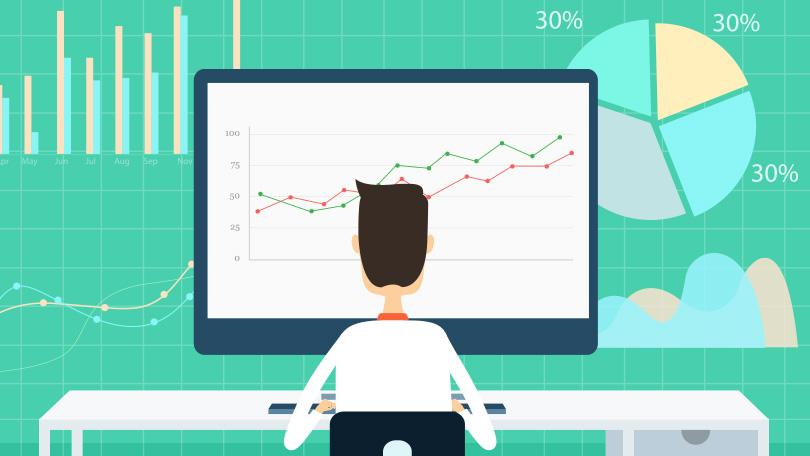
The way people do business continues to change. According to Gartner, business intelligence (BI) is going mobile and social, and its mainstay is information technology that helps companies access, process and use important datasets and reports. If you ask why these changes are critical, the answer is simple.
There is a growing need for collaborative technologies, information and social applications to gain a competitive edge in today’s business environments. BI is, therefore, an area on which you can ask, “Who can write my research paper?” and get the help of a professional service. In the wake of these changes, it is also noteworthy that enterprises will switch to new ways of acquiring vital analytics, and most importantly modify BI for purposes of decision-making.
Further findings by Gartner indicate that organizations will make the most of new trends in management, market trends and technology towards full implementation of BI.
Evolution of Mobile BI

Before exploring Gartner’s perspective of BI, let’s take a few steps back into history. It was not until recently SandHill.com published findings from a study on mobile computing indicating that BI was gaining traction. More than a decade ago, businesses emphasized mobile content viewing, which included performance index, reports and alerts.
However, when BI started picking momentum, thanks to the widespread use of mobile devices in the 1990s, a lot was bound to change. From the distribution of important business data, access to storage of information, no business partner was going to feel like remotely alienated anymore. Howard Dresner, a former IT researcher at Gartner, a co-founder of Business intelligence Practice, a research fellow and presently, the President of Dresner Advisory Service, LLC, proffers the future of BI will be about new methods and concepts that guide decision making. Most notably, support systems that rely on data analytics.
Today, BI encompasses social features and mobile platforms, which are pointers to significant improvements. Content Interaction and navigation is the focal point of new changes. Think about someone using a mobile device to drag, drop and drill information about a business, not to mention virtually navigating a premise (Augmented Reality) – it becomes clear that Business intelligence will be accessible anywhere and anytime.
In a nutshell, today’s BI takes place in the following major ways:
- Using a browser on a mobile device to acquire vital data/metrics on the web.
- Using mobile OS-specific applications for real-time access to critical information.
Each of the above approaches has its ups and downs. Findings by Gartner, however, indicate that use-case scenarios will help inform the best BI at any given time. All in all, coping with the high-speed business environment in the 21st Century can only be realized through the expansion of business intelligence software.
Gartner Identifies four major trends in BI

To help businesses make the best of evolving as well as emerging technologies, Gartner identifies the following trends in business intelligence:
1. Processing of Data Analytics
Analytics have become indispensable data facts in the 21st century, and most importantly, inseparable from Business Intelligence. According to Gartner, Data analytics will increasingly rely on in-memory to scale up functions, make proactive decisions and predict changes.
A case in point is predictive modeling, a marketing approach that relies on data mining and machine learning to predict outcomes. As a result, businesses will realize growth in performance, improvement in management decisions and accuracy in raw data analysis.
2. Mobile Analytics
With the Internet of Things (IoT) becoming more in-demand by the day, Gartner further posits that Business Intelligence is set to go mobile. Improvement on early mobile dashboards and reports will move to BI apps suited to specific tasks. It is all about organizations collaborating with product managers to create customer-facing mobile solutions accessible on the go.
With this BI approach, IoT is further set to get a facelift as customers will be able to track information relating to a business and its products. It is a deployment of analytics that brings together a powerful combination of cloud computing, information, mobility and socialization.
A case in point is embedding sensors chips onto products. In the end, customers will gain access to geospatial and performance-related information about items before placing purchase orders.
2. Integration of BI and social software
Today, businesses rely on analytics to make the right decisions. And now with increasing social awareness and need for heightened collaboration, Gartner predicts that BI will further incorporate social software to improve the performance of products in the market. Creating a link between social networking and collaboration via mobile Apps is, therefore, the next trend in data analysis. It is set to improve investment decisions.
3. A move away from software vendors to system integrators
For a long time, businesses depended on software vendors to provide clients with structured data and information. However, things are changing, fast and furious. A loop of integrated systems will help businesses realize interconnectedness. Most of these, the research company argues, are user-driven. Think about having a pool of information in one place or a complete loop of curated content that comprises varying types of data and social media, a picture of the digital economy comes to mind.
The Bottom Line
As global demand for information continues to soar, so are businesses that want to integrate as many IT assets as possible. The hallmark of Gartner’s predictions is, therefore, continuous Business intelligence that incorporates real-time analytics, Artificial Intelligence, Machine Learning and Mobile applications for better decision making and leveraging the relationship between businesses and customers.



